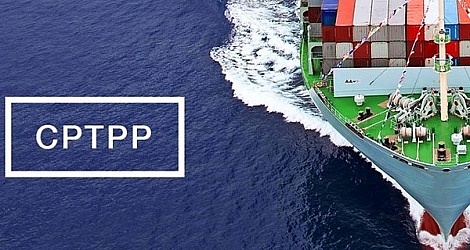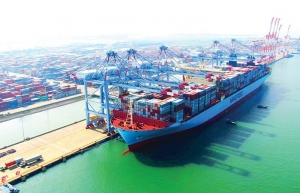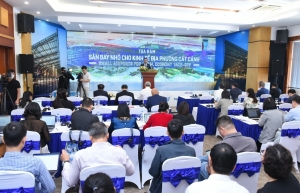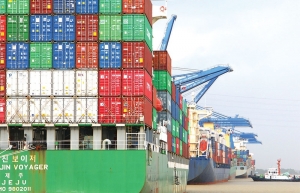CPTPP expansion a potential boon for Vietnam
 |
Luong Hoang Thai, director of Multilateral Trade Policy under the Ministry of Industry and Trade (MoIT), acknowledged the potential for Vietnam to grow alongside major trade deal expansion at a December 26 conference to summarise the achievements of Vietnam after three years in the CPTPP.
“During the past time, the MoIT has cooperated with ministries and the bloc’s members to discuss the expansion of the CPTPP in the context that a number of economies are interested in being members,” Thai said.
“Having more members from Asia in particular means that Vietnam will lose the advantage of being a pioneer in the region in establishing the relationship with countries in CPTPP – thus, the business community needs to foster the opportunities more rapidly in order to get the full benefits from the agreement,” he said.
In 2021, the total export turnover of Vietnam to CPTPP members reached $45.7 billion, up 18.1 per cent on-year. The import turnover from these members to Vietnam was $45.5 billion, up 37.6 per cent on-year.
In the first ten months of 2022, the total import-export value between Vietnam and CPTPP economies was $88.1 billion, up 19.2 per cent on-year, including $45.1 billion in export value and $43 billion in import turnover.
The CPTPP is a free trade agreement between Australia, Brunei, Canada, Chile, Japan, Malaysia, Mexico, Peru, New Zealand, Singapore, and Vietnam.
Ecuador filed its application to join at the end of 2021, while Costa Rica announced an intention to apply in July this year. The UK began negotiations about joining in February, while China submitted a formal application in May.
 | CPTPP gains allure new states Three years into implementation of the Comprehensive and Progressive Agreement for Trans-Pacific Partnership, a range of other diverse economies are seeking to fast-track their accession into the bloc – which in turn could help Vietnam integrate deeper into cross-border activities. |
 | Vietnam ranks 63rd out of 113 economies in new global index of digital entrepreneurship systems Vietnam is ranked 63rd out of 113 global economies in a global ranking of digital environment and support systems for entrepreneurs, a new index developed by the Asian Development Bank (ADB). |
 | Small airports set to help local economies take off The development of small airports is believed to be crucial to boosting the potential of various regions and helping local economies to take off, a VIR roundtable heard on October 11. |
 | Economies evolve China+1 strategy For the last few years, manufacturers have been utilising a China+1 strategy in order to not place too much reliance on one location, and areas like Southeast Asia and India are benefiting. The strategy is now being tweaked and tinkered with as a result of geopolitical tensions and China’s ongoing battle with anti-pandemic policy. |
What the stars mean:
★ Poor ★ ★ Promising ★★★ Good ★★★★ Very good ★★★★★ Exceptional
Related Contents
Latest News
More News
- Ho Chi Minh City hits $8.37 billion in FDI (December 29, 2025 | 08:28)
- Tax sector wraps up 2025 and sets priorities for next year (December 25, 2025 | 14:00)
- Heavy industries set for pilot greenhouse gas quotas (December 25, 2025 | 10:00)
- $250 million deal targets women-owned SMEs, sustainable agriculture (December 22, 2025 | 17:40)
- UOB sees Vietnam growth easing in fourth quarter (December 22, 2025 | 17:39)
- Government moves to establish International Financial Centre (December 21, 2025 | 21:00)
- Vietnam's IFC to target global investment flows (December 21, 2025 | 18:00)
- Ha Tinh breaks ground on major Vingroup industrial and energy projects (December 19, 2025 | 18:24)
- EVN launches major power infrastructure projects nationwide (December 19, 2025 | 18:17)
- VAL inaugurates second production line to meet domestic animal feed demand (December 19, 2025 | 16:37)

 Tag:
Tag:





















 Mobile Version
Mobile Version